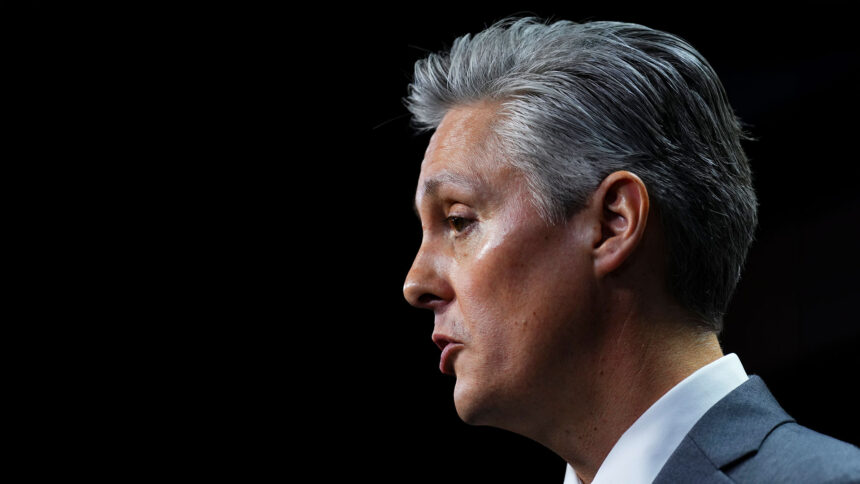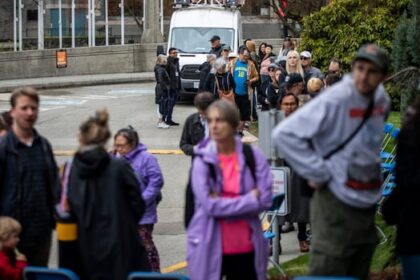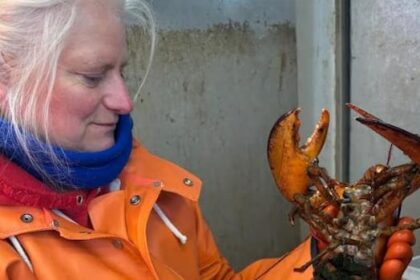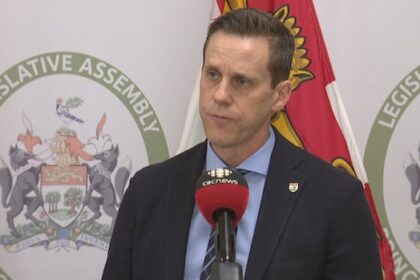Leaders from the Northwest Territories are in Ottawa, lobbying the federal government to advance three major projects in the North. “The North is ready. Indigenous governments are ready. Our projects are ready. We’ve talked about the North long enough; it’s time to start building it,” Northwest Territories Premier RJ Simpson said Tuesday morning at a press conference in Ottawa. Simpson appeared alongside members of the NWT Council of Leaders, which is composed of representatives from the territorial government and Indigenous communities. They came to Ottawa as a united front “to make clear that our priorities are shared and to ask Canada to match that unity with firm, long-term commitments,” Simpson said. Their major project asks include expanding power generation capacity at the Taltson Hydro station and adding a new transmission line to connect the Taltson system to the North Slave hydro system, which will benefit communities and businesses looking to capitalize on the region’s critical mineral reserves. “We have probably every mineral … that’s required to run this world, to run this country, and it hasn’t been explored to the degree that it could be,” Danny Gaudet, chair of the Council of Leaders and chief of the Délı̨nę Got’ı̨nę Government, said at the press conference. The Mackenzie Valley Highway, a proposed 321 kilometre all-season road between Wrigley and Norman Wells, N.W.T., is also a priority. The third project NWT leaders championed is the Arctic Economic and Security Corridor, which would provide all-season road access to mining projects between Yellowknife and the Nunavut border and potentially link to the proposed Grays Bay deepwater port and road project. None of these projects made it into the first tranche of Carney’s megaprojects but the Arctic Economic and Security Corridor was listed as a secondary project and could be named to the list as soon as the Grey Cup. Conversations on the road’s route are live and Yellowknives Dene Dettah Chief Ernest Betsina emphasized the importance of protecting caribou migration routes and calving grounds along the route. “These are nation-building projects together,” Simpson said. “They secure sovereignty in the Arctic, fuel the clean energy transition and advance reconciliation by putting Indigenous governments in the role of co-owners and decision-makers.” Arctic sovereignty was a big selling point. “I’m excited the federal government’s starting to say things that sound a little more promising,” Caroline Wawzonek, deputy premier of the Northwest Territories and minister responsible for strategic infrastructure, said at the press conference. Every Canadian needs to be asking why we’re not building in the North right now, Wawzonek said. The Northwest Territories’ land is roughly equal to that of France, Spain and Portugal combined, she pointed out. “There is not a single road where the military could convoy from the southern part of Canada up to the Arctic coast and Northwest Territories. Not one,” Wawzonek said. “We are not on the North American energy grid. We pay four times more for energy after subsidies. The military is not connected to the North American energy grid when they’re in the Northwest Territories. Wawzonek added the government — which she says is small relative to the huge region it serves — doesn’t have the capacity to come up with complex financial arrangements, so they’ll put the major projects office to work to figure out costing and support for projects. “The reality is that the North has been underdeveloped for successive governments over and over and over again,” Wawzonek said. “Those days have to be over. Canadians should have some fear in their hearts if we can’t convoy the military from the South to the North, if we can’t land the new aeroplanes that they’re building anywhere in the North.” Because the Northwest Territories operates on a co-management system including Indigenous governments, the government of the Northwest Territories and the Government of Canada, the territory doesn’t have the same regulatory hurdles as other regions. The main hurdle is financing, Wawzonek said. “It can’t be on the backs of 45,000 Canadians to support Arctic security or to unlock the wealth of the North. That has to come from somewhere beyond our borders.” Last fall, the federal government committed $25 million for the Taltson hydro expansion. By Wawzonek’s estimate, the project’s overall price tag is somewhere between $2 and $3 billion. The expansion and transmission line would unlock clean power for industry to pursue the region’s critical mineral stores. Moving forward, “the conversation with industry has to change” from just land payments, access agreements and social and economic impacts to, “How do we be owners in the industry?” Gaudet said. “We own the resources, we might as well own the mine, also.” Story by Natasha Bulowski, Local Journalism Initiative Reporter Source: Canada’s National Observer Continue Reading
Leaders urge Ottawa to build the North with next major projects

Leave a Comment











